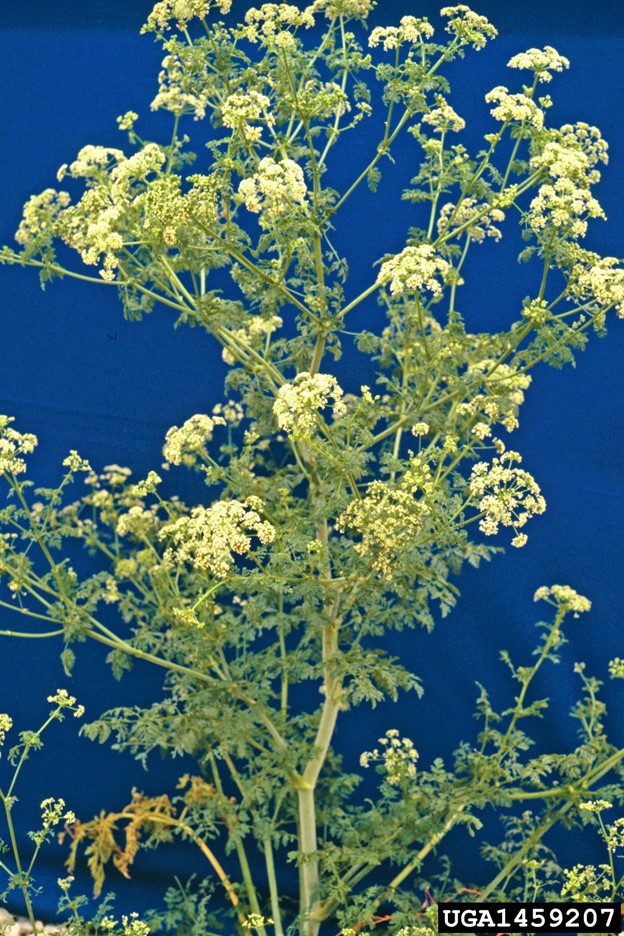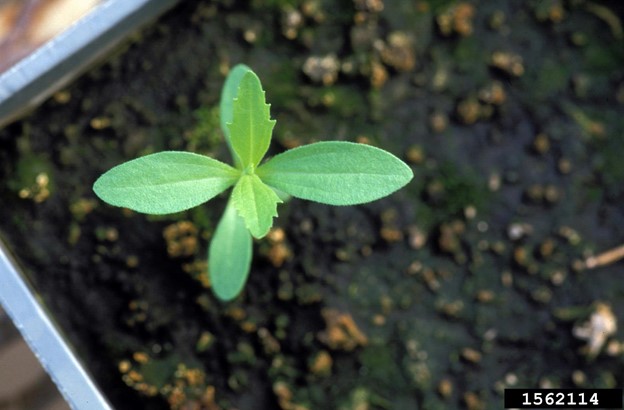Issue 12, October 8, 2022
Poisonous Plants in the Vegetable Garden
Poison hemlock and wild parsnip may come to mind when thinking about poisonous plants. They both gained considerable media attention this summer for the immediate health risks associated with direct exposure to these plants. White snakeroot seems to be in abundance this fall. Although with this one, the risk isn’t touching the plant but rather consuming tainted milk from dairy cows who fed upon this plant. Many are cautious around these plants, but what if these plants are allowed to grow and then die back in an area that will be used to produce vegetables? Are there long-term risks associated with these and other poisonous plants that once grew where vegetables are grown and harvested?

Poison hemlock, Steve Dewey, Utah State University, Bugwood.org
While it’s not uncommon for me to be asked about poisonous plants and their control, recent client inquiries have had a slightly different twist with the primary concern being about the effect these plants will have on the soil and possible risks associated with growing garden produce in these sites. To further explain, one of my clients had cut down poison hemlock plants and left them to decompose on site. Upon further consideration, they were concerned about the soil being adversely affected and turned to Extension for assistance with good questions such as:
- “Are plants grown in the soil where the hemlock was composted safe to eat?”
- “Any idea when the soil will be safe? Anything I can do to help neutralize the poison in the soil? Or to test the soil?”
- “Are certain plants ok to eat vs. others?”
To build on this, a recently created poison hemlock fact sheet states:
“Hand-removed plants should not be burned or added to mulch or compost piles intended for use in areas where additional exposure is likely, as it takes several years for the toxins to dissipate, even in dried plants parts. Repeated tillage/cultivation can control infestations and prevent seedling establishment.”
It should be made clear that the intent of this composting precaution is for preventing dermal exposure when handling the compost. No intention was meant for protecting the soil from possible toxicity as it relates to growing produce.
I have never heard of toxic compounds from poisonous plants remaining in the soil and causing future problems with toxicity in humans when garden produce (grown on site) is consumed. Because I am not a toxicologist, I called Illinois Poison Control for assistance and to confirm my guidance was appropriate. I was told by a trained Poison Control toxicologist that there should NOT be a problem with the situation as described by the client. The primary poisoning concerns with poison hemlock are by exposure to skin and eating/ingesting plants directly. Mulching (and composting) would be discouraged as hands and other skin could be repeatedly exposed. Even dried plants could still affect your skin. The toxicologist concluded by saying that the toxins should not leach from the plants into the soil and that their recommendation is to simply wash future produce before consuming.
Soil testing would not be necessary – I don’t believe this specific type of testing exists even. Ingesting the soil by humans would be highly unlikely as it is not palatable, so that risk is very low. I would add too that when plants decompose, they are broken down by sunlight and microbes in the soil. In order to be poisoned by produce growing in the area the following spring, there would have to be several factors at play (available toxins in sufficient amounts that are not degraded or leached away, that are taken up by living plants and accumulated in the edible portions and then consumed in sufficient quantities to cause a poisoning). Remember that the dose makes the poison! A much greater concern should be possible exposure or ingestion to living plants rather than produce grown in soil that contained organic matter from these dead plants.
Certainly, if you or your clients find themselves in a similar situation, a call to Poison Control may be warranted and provide peace of mind. Their trained toxicologists are happy to assist with these types of questions.

Poison hemlock seedling, Ohio State Weed Lab, The Ohio State University, Bugwood.org

Wild parsnip seedling, Ohio State Weed Lab, The Ohio State University, Bugwood.org

White snakeroot seedling, Ohio State Weed Lab, The Ohio State University, Bugwood.org
It’s best not to allow any poisonous plants to grow where food is grown. They should be safely controlled and removed from the area. Control tactics should be deployed prior to seed development to prevent future infestations. Keep a watchful eye out for future seedlings.
Author:
Michelle Wiesbrook